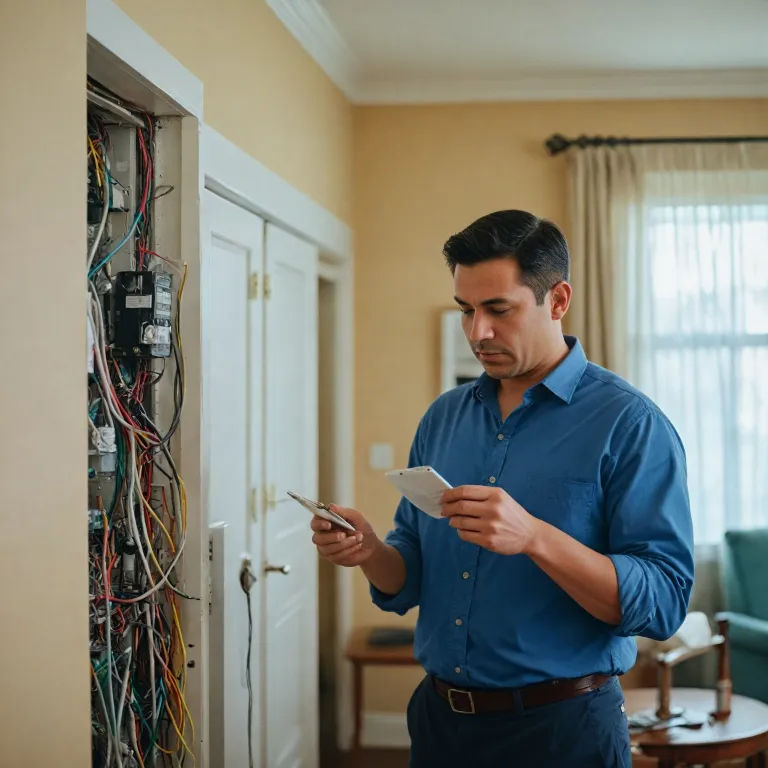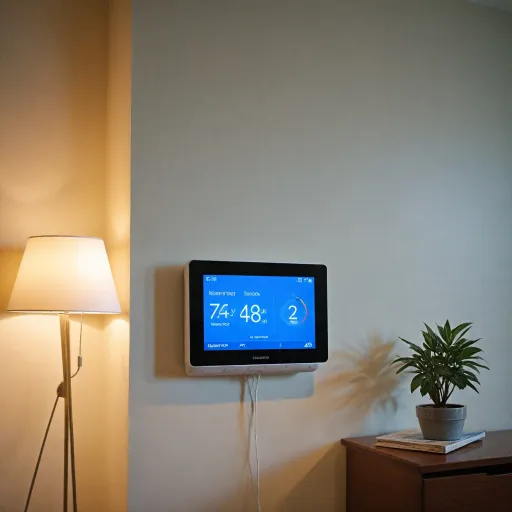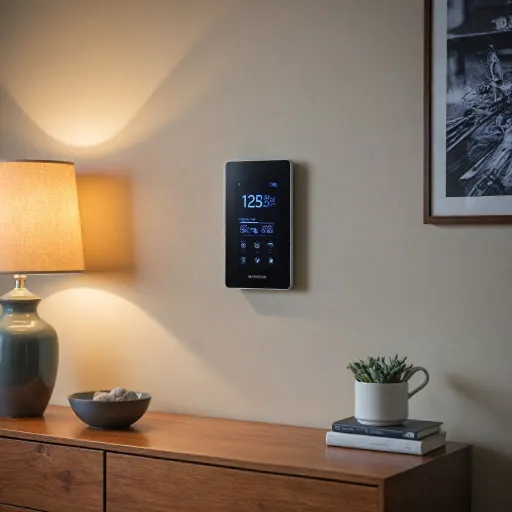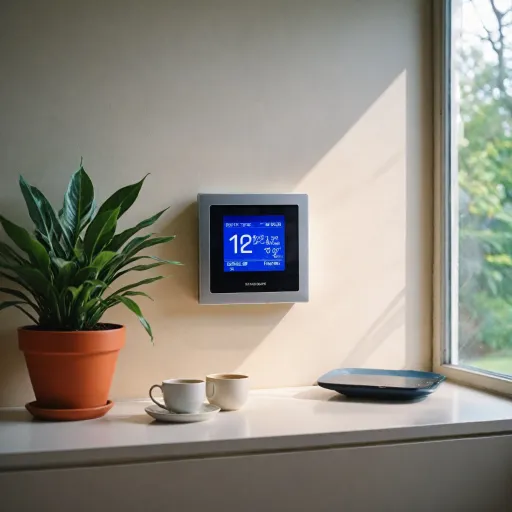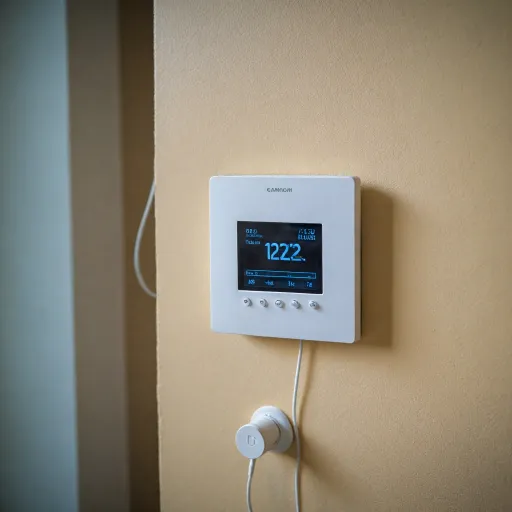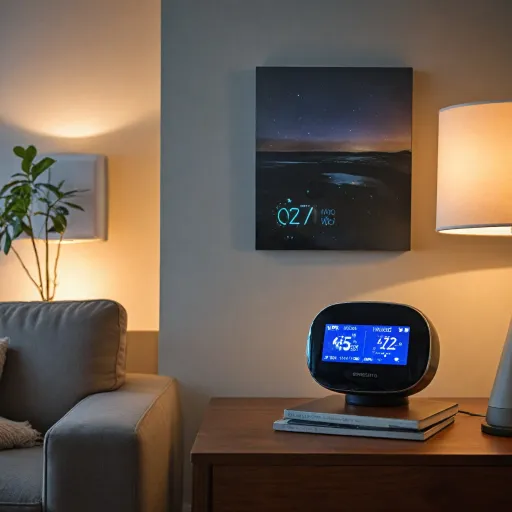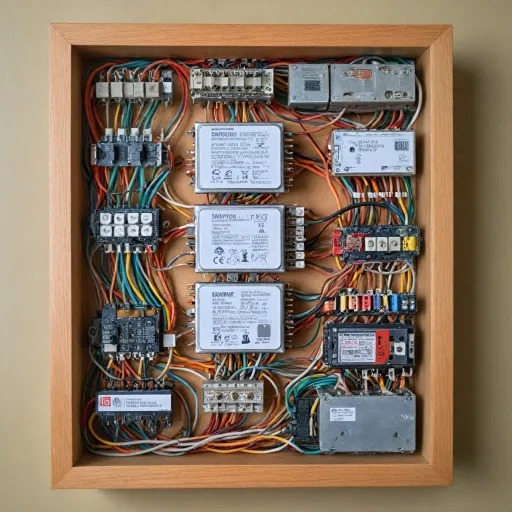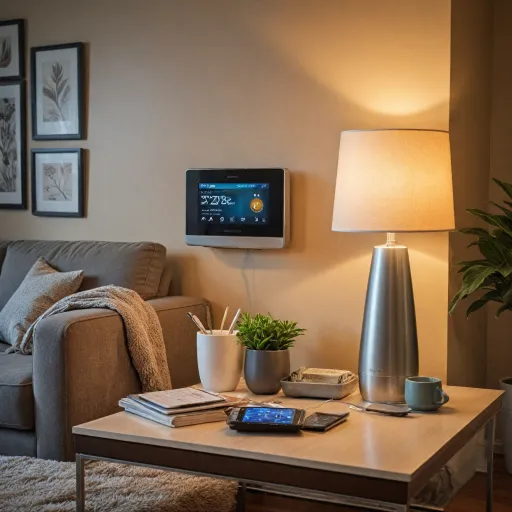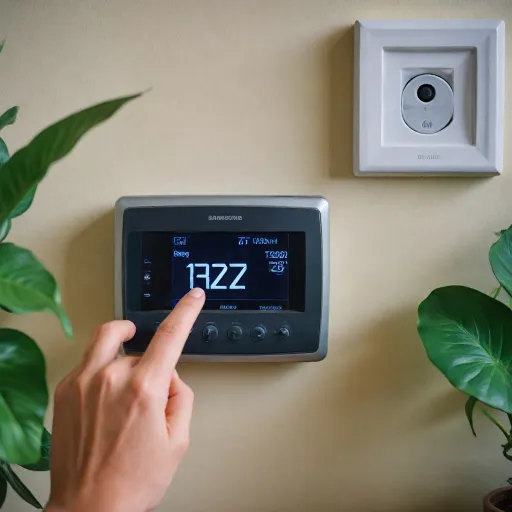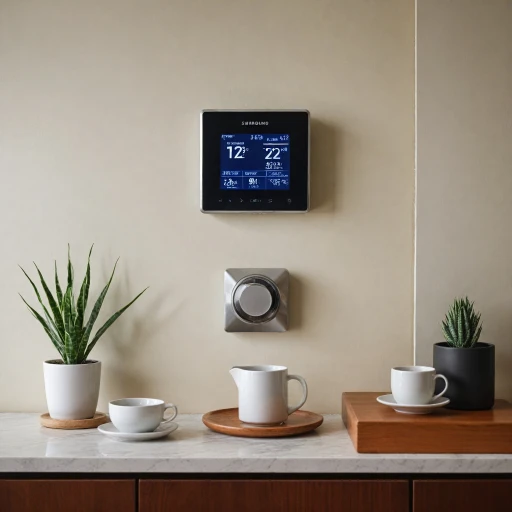
Understanding Smart Thermostats
With the growing trend of smart homes, the smart thermostat has emerged as a central figure in enhancing energy efficiency and overall convenience. Smart thermostats are designed to automatically adjust your home’s heating and cooling temperature settings for optimal performance.
Advancements in Thermostat Technology
Today's smart thermostats are much more than just digital displays that replace traditional dial or digital thermostats. They offer features including remote control via a smartphone app, learning capabilities where they adapt to your schedule, and insights into your energy usage.
For those who are environmentally-conscious or looking to reduce their utility bills, these devices can contribute to significant energy savings, as they optimize when and how your HVAC system operates.
Complexities in Installation and Wiring
The advent of smart thermostats brings the added task of navigating through potential wiring complexities. The installation process isn’t just simple plug-and-play; it often requires a basic understanding of electrical work and sometimes the need for additional components like a C-wire. For clarity on these challenges, check this guide on wiring complexities.
Also, not all smart thermostats are compatible with every HVAC system, so a thorough assessment of your current setup is essential.
Assessing Your Current Setup
Evaluating Your Current Thermostat and HVAC System
Before diving into the replacement of your thermostat, it's crucial to first discern how your current setup is configured. This step forms the foundation for a successful transition to a smart thermostat, ensuring compatibility and effectiveness. Understanding your existing thermostat system involves a few key considerations:- Compatibility: Not all smart thermostats are compatible with every HVAC system. You'll need to verify if your system supports the type of smart thermostat you are considering. This often requires knowledge of the type of HVAC system you have, be it a standard, heat pump, or other specialized system.
- Wiring Requirements: Smart thermostats typically require a more complex wiring setup than traditional thermostats—often a common wire, or "C-wire," is needed. To understand these requirements better, refer to understanding the complexities of thermostat wiring.
- Age and Condition of Current System: The age of your current HVAC system can impact the need for a professional electrician to ensure safe and efficient installation. Older systems might not have the necessary wiring already in place.
DIY Replacement: Pros and Cons
Weighing Your Choices for Thermostat Replacement
Embarking on the journey of thermostat replacement might entice those who enjoy the challenge of a DIY project. However, smart thermostat installation isn't just about mounting a device on the wall. Evaluating the complexities involved in replacing your thermostat is crucial to ensuring an efficient and safe integration into your existing HVAC system. Opting for a do-it-yourself approach could potentially save you money on installation costs. However, the intricacies of electrical work, such as connecting wires properly to ensure system and user safety, cannot be understated. Here’s what to consider:- System Complexity: Smart thermostats often interface with intricate HVAC systems, requiring an understanding of how these systems operate in tandem. Missteps here might compromise both heating and cooling efficiency.
- Electrical Skills: Installing or replacing a thermostat involves basic to advanced electrical work. Knowing the wiring and ensuring connections are correctly made without errors is essential.
- Warranty and Safety: Improper installation might void warranties or create safety hazards. Professional thermostat installation guarantees that these risks are minimized, reinforcing safety and system integrity.
- Efficiency Gains: Proper installation by a professional can ensure the smart thermostat efficiently manages energy use, maximizing cost savings on your energy bill.
When to Call an Electrician
Recognizing When to Seek Professional Help
Replacing a thermostat can be a straightforward task; however, there are specific scenarios where hiring a professional electrician becomes crucial. Safety is paramount, and performing any electrical work, such as a thermostat installation, should not be taken lightly.
A professional electrician or an HVAC technician possesses the necessary knowledge and expertise to ensure the safe and efficient replacement of your thermostat. Here are situations where their expertise is invaluable:
- Complex Wiring Systems: If your current setup involves a complex electrical system or if you're handling a smart thermostat with advanced connectivity, consulting a licensed electrician is prudent to avoid wiring errors.
- HVAC Integration: For HVAC systems that require specific connectivity and configuration, an HVAC technician can ensure the integration promotes optimal energy efficiency.
- Warranty Concerns: Many manufacturers require professional installation to maintain warranty validity. Verify your smart thermostat's warranty requirements before proceeding with a DIY installation.
- Electrical Work Regulations: Some regions have strict regulations dictating who can conduct certain electrical work. A skilled electrician will comply with local codes, ensuring all work is legal and safe.
- Avoiding Unexpected Costs: Mistakes during installation can incur additional costs for repairs and maintenance. By opting for professional installation, you mitigate these risks and potentially reduce overall costs.
While DIY projects offer the satisfaction of personal accomplishment, professional installation can provide peace of mind that your heating and cooling systems will function seamlessly with your smart thermostats.
Cost Considerations
Evaluating Costs of Smart Thermostat Installation
When considering the replacement of your thermostat with a smart version, understanding the cost implications is essential. While the initial investment might seem significant, the long-term benefits usually justify the expense. Here are several factors affecting the cost:
- Thermostat Price: The cost of smart thermostats can vary widely based on brand, features, and technology. Basic models may start around $100, while premium versions can reach upwards of $300 or more.
- Professional Installation: Hiring a professional electrician or HVAC technician to install your smart thermostat can add to the cost. This fee depends on the complexity of the HVAC system and the intricacies involved in the thermostat installation.
- DIY Installation Costs: If you opt for a DIY installation, you may save on labor costs. However, ensure you have the necessary tools and knowledge of the electrical work. Missteps can lead to costly repairs or void the warranty.
- Energy Savings: One of the most significant financial incentives of smart thermostats is their energy efficiency. Properly utilizing the features can reduce heating and cooling costs, often recouping the cost of thermostat replacement over time.
- System Compatibility: Additional costs might arise if your current HVAC system requires upgrades to accommodate the new thermostat. Consulting a licensed electrician can provide clarity on any potential needs.
Ultimately, weighing the immediate and long-term financial impacts, along with potential DIY savings and professional installation supports like ensuring the system's safety and efficiency, will guide your decision. Consider all factors thoroughly before proceeding with the replacement.
Choosing the Right Smart Thermostat
Choosing the Best Smart Thermostat for Your Home
Selecting the right smart thermostat involves considering several factors to ensure it suits your home and lifestyle. Here’s what you need to think about:- Compatibility with Your HVAC System: Before purchasing, ensure the smart thermostat is compatible with your existing HVAC system. Not all models support every type of system, so this step is crucial to avoid issues during the thermostat installation.
- Installation Requirements: Some smart thermostats can be more complex to install than others. Evaluate whether you can handle a DIY installation or need a professional electrician. An expert installation can guarantee safety and protect your warranty.
- Energy Efficiency Features: Look for a model with features designed to enhance energy efficiency, such as learning capabilities that adapt to your schedule or remote access to control your heating and cooling systems outside the home. These features can lead to long-term cost savings on your energy bills.
- User-Friendly Interface: Choose a thermostat with an intuitive interface, ensuring it’s easy to adjust settings and operate. A smart thermostat should simplify your life, not complicate it.
- Cost of Installation: Factor in the cost install when budgeting. Professional installation might incur additional costs but provides peace of mind, especially if there’s extensive electrical work involved.
- Brand and Model Reviews: Research different brands and models, considering user reviews and professional assessments. This can provide valuable insights into performance, reliability, and customer support.
